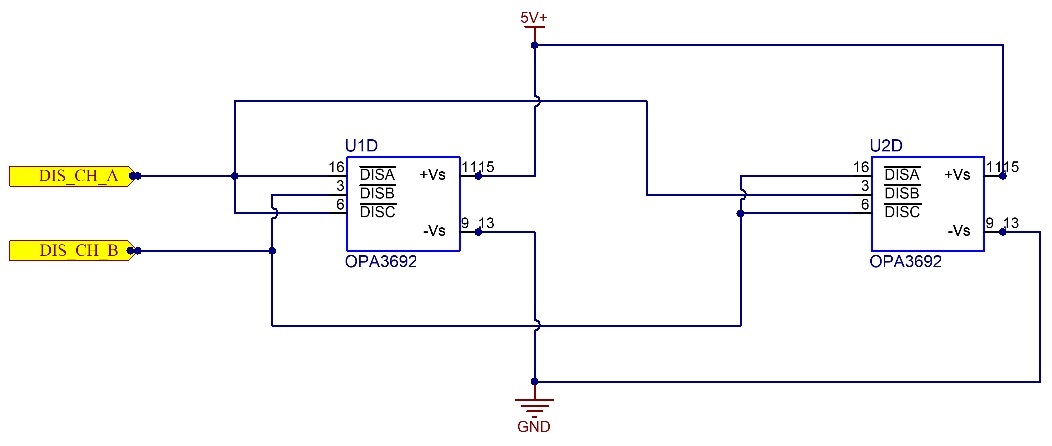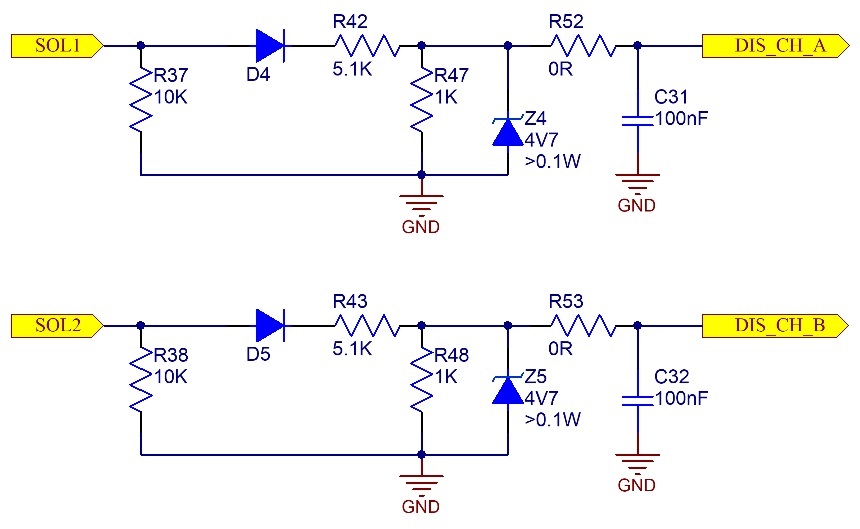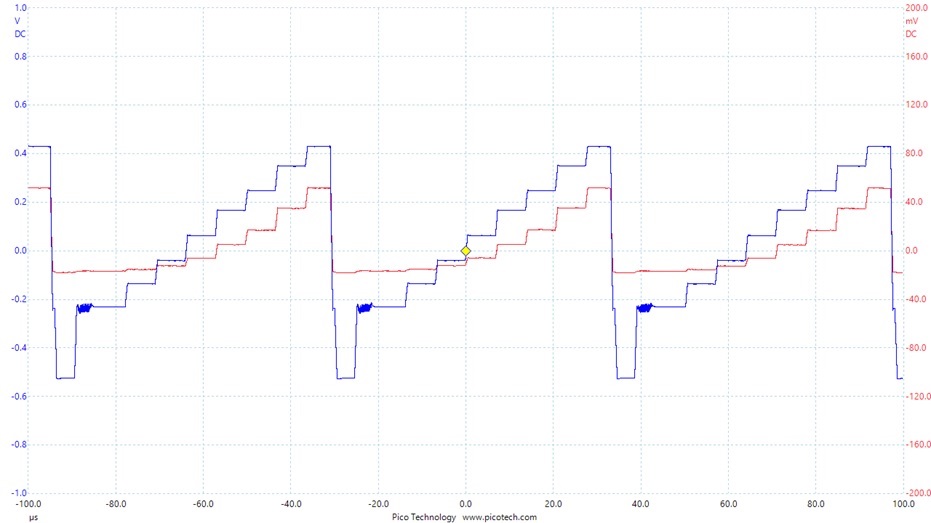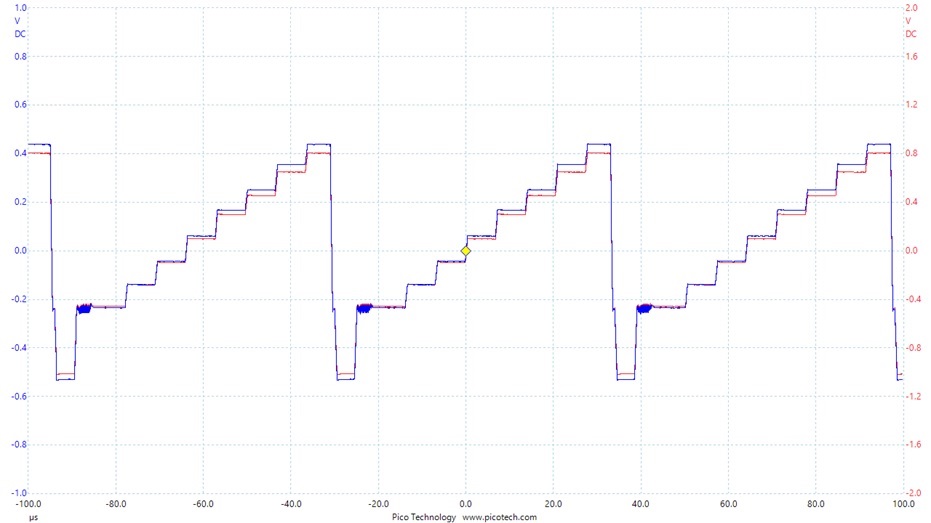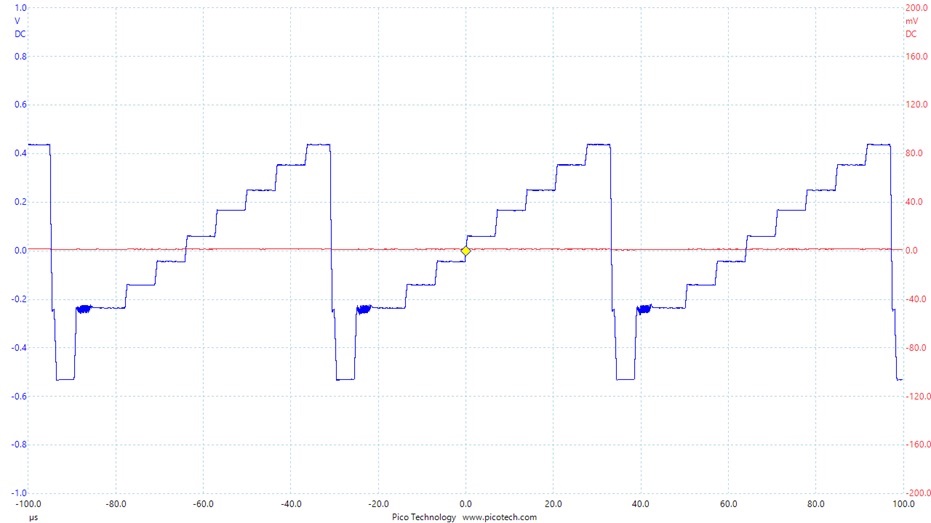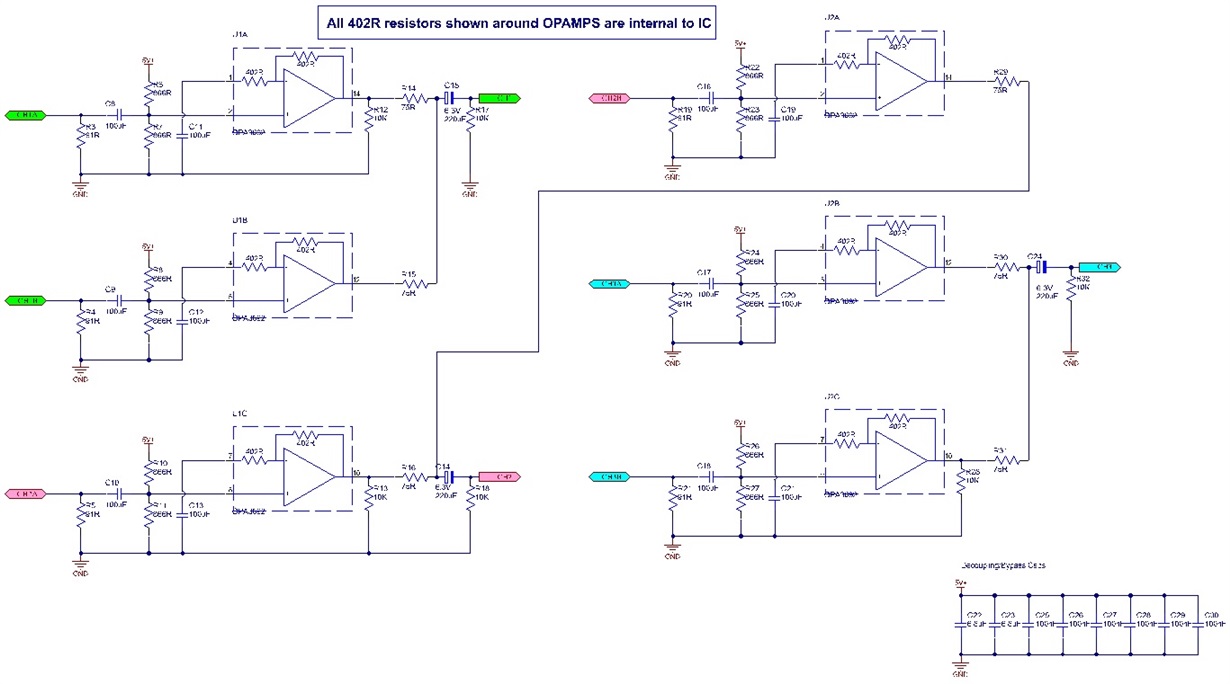Other Parts Discussed in Thread: TINA-TI
OPA3692 Problem
Setup:
Two (2) Opamp ICs OPA3692 are used with 6 OPAMPs in total (as each OPA3692 has 3 OPAMPS). The 6 OPAMPs are divided into 3 groups. Each pair is exactly same as below so, only testing only first pair (See Figure1).
The pair takes input from two different video sources at CH1A & CH1B (in Figure-1) and channels only one input to the output (CH1 in Figure-1) depending upon the DISABLE LINE (Ignore U2D as it belong to second OPA3692 IC – see Figure2) (The other pairs also take inputs from different sources and send the signal to their own respective output channels)
The drive circuit for DISABLE Line is also shown in Figure-3. The Inputs SOL1 & SOL2 are driven from 24V control lines from a different board. (However, this circuit was also tested by pulling DOWN the DISABLE lines of Amplifiers by putting short circuit across C31 & C32 in Figure-3 to ensure that DISABLE Line of OPA3692 is pulled down to 0V – This had no effect on the results)
OPAMP has 6.8uF & 100nF Bypass Caps on Supply Rail (5V) and not shown in the pictures below
Figure-1: One pair of two input – one output video amp/buffer
Figure-2: Disable lines & Power Supply blocks for OPA3692 – ignore U2D as it belongs to 2nd OPA3692 IC
Figure-3: DISABLE Lines drive circuitry – Also tried to disable by putting short circuit across C31 & C32
Results:
With Disable Line on both amplifier switched OFF (pulled DOWN):
Ch-A: Input Video Signal (Blue) (@ CH1A – above schematic) (Grey scale bars from a video tester)
Ch-B: Output Video Signal (Red) (@CH1 – above schematic) (Only oscilloscope connected at output with No Load)
(No Video Signal Applied on CH1B input)
Figure-4: DIS Line pulled LOW for U1A & U1B – but there is considerable video signal (RED) at the output that appears as dim lines when TV is connected at the output (TV was not connected when this trace was taken)
!!!This is problematic issue!!! As it was expected to be similar to Figure-6 Negligible signal at output – see below)
------------------------------------------------------------------------------------------------------------------------------
With Disable Line on amplifier U1A switched ON (apprx 3.6V) & on U1B switched OFF (pulled LOW)
Ch-A: Input Video Signal (Blue) (@ CH1A – above schematic) (Grey scale bars from a video tester)
Ch-B: Output Video Signal (Red) (@CH1 – above schematic) (Only oscilloscope connected at output with No Load)
(No Video Signal Applied on CH1B input)
Figure-5: U1A enabled and output is almost same as input (as expected) (Similar traces were observed if Video Input is applied at CH1B with U1A disabled & U1B enabled)
------------------------------------------------------------------------------------------------------
With Disable Line on amplifier U1A switched OFF (pulled LOW) & on U1B switched ON (apprx 3.6V)
Ch-A: Input Video Signal (Blue) (@ CH1A – above schematic) (Grey scale bars from a video tester)
Ch-B: Output Video Signal (Red) (@CH1 – above schematic) (Only oscilloscope connected at output with No Load)
(No Video Signal Applied on CH1B input)
Figure-6: U1A is disabled but U1B is enabled (with No Video Signal at U1B’s input). Output is flat apprx 0V as expected (No dimmed lines on TV if connected at the output)
-----------------------------------------------------------------------------------------------
Problem:
As it could be seen in Figure-5 that with both amplifiers disabled (either using the drive circuitry of Figure-3 OR by putting a short circuit across C31 & C32), there is small signal at the output which manifests itself on TV screen as dimmed lines. I was expecting it to behave like it is shown in Figure-6 but that requires Enabling at least one amplifier which is not how it is intended to be used in field. The amplifier specs in datasheet show that:
Figure-7: Off Isolation Specs from Datasheet
I am not exactly sure how this OFF isolation of 74dB would convert to the Gain in V/V but if I use standard V/V to dB conversion
-74dB = 0.0002 (Voltage Ratio Gain/Loss)
So for
1V input the output should be 0.0002V
@ 424mV apprx (See Figure-8 below) input the output should be 0.0848mV
But the trace shows it is apprx 49.9mV (See Figure-8 below)
I was wondering if someone could please help me here in fixing this issue. Am I misinterpreting the OPA3692 OFF isolation specs? Is it working as expected from datasheet point of view? Am I doing something wrong in this circuit? What would you suggest as modifications in the circuit to get around this problem?
Figure-8: Signal measurement with U1A & U1B disables (Blue is Input & Red is Output)



